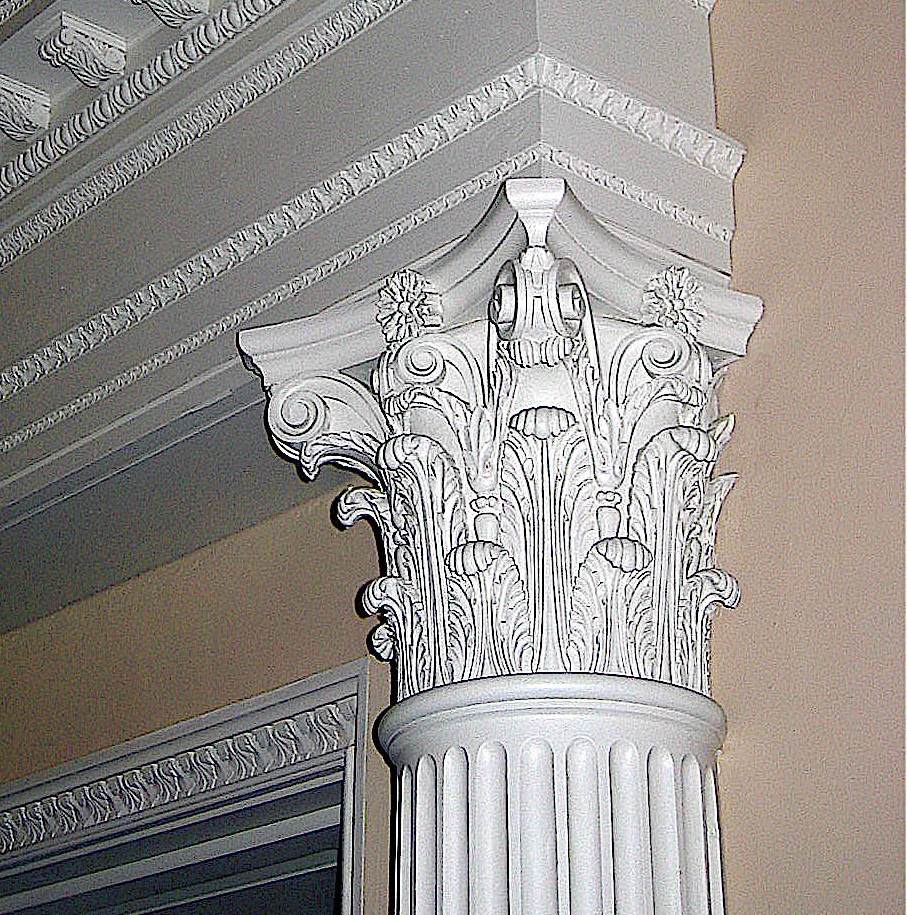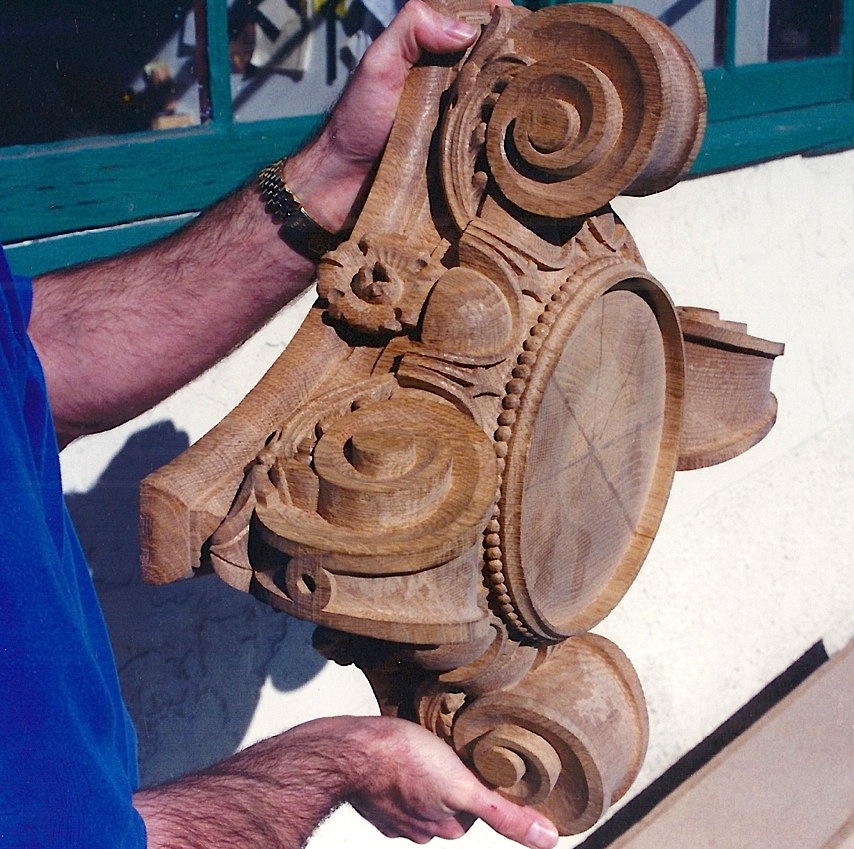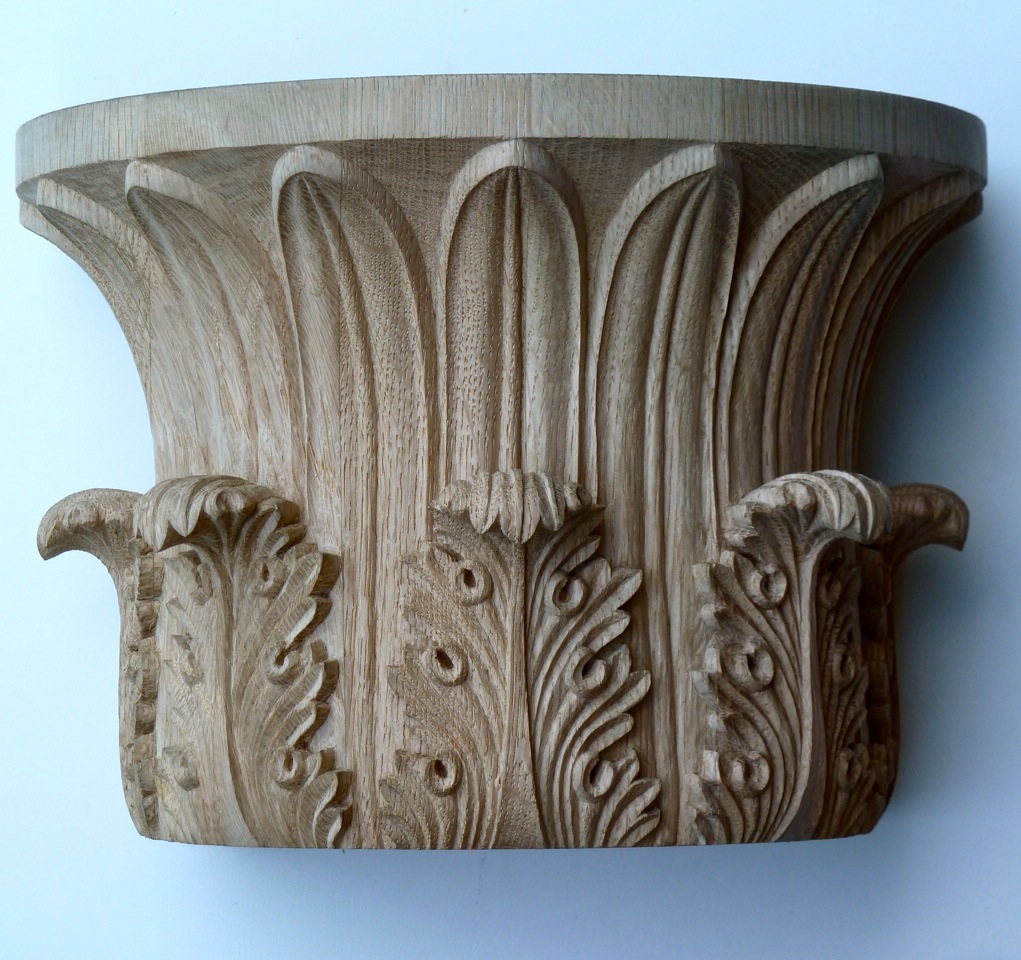You are here
Why do hand-carved capitals cost so much?
We bid on a lot of capitals. Whether the client requests Ionic capitals, Corinthian capitals, a mixture of the two (usually called Composite) or something entirely different, our estimates are often met with sticker shock. Why do they cost so much? We're happy to answer this question to help the client become more familiar with the process—and more comfortable with the bid.

We see capitals as the monarchy of classical architecture and design. They represent and illustrate the proportions, complexities, and characteristics of the five architectural orders. (If you'd like to learn more about how capitals fit into the architectural orders, go here.) Consider how long it must have taken to build those ancient temples and cathedrals and to carve those capitals hundreds of years ago. Guess what? Nothing's changed. We manufacture capitals in almost exactly the same way, using virtually the same tools and techniques. There's no way to reduce the time it takes to carve a capital without compromising the quality of design. It can even take days to draw a perfect capital.
Capitals, and especially column capitals, are complicated to manufacture. First, we need to glue up a large block of wood, called a blank. In most cases, this blank must be equal in width to the measurement between the furthest outer points of the volutes, or the scrolls you see around the top. Whether solid or hollow, that's a big chunk of wood. If it's a column capital—that is, it's fully round—then the block is turned, but only up to where the volutes start. On a Corinthian capital, that turned area will contain the leaves. There's still more waste to remove: The area between the volutes has to be cut out carefully by hand (or sometimes using a bandsaw) in order to maintain the delicate shape of the scrolls.

Well, that's a start. Now the capitals need to be hand-carved.
Corinthian capitals typically have three layers of acanthus leaves that repeat all the way around the area below the volutes. There can be a couple dozen of these leaves, each one highly detailed and heavily undercut to mimic gravity's pull. An Ionic capital is more likely to feature egg and dart molding, which is less complicated—and therefore less time-consuming—to carve than foliage. However, both Corinthian and Ionic capitals have volutes around the top. In fact, a Corinthian can have as many as eight.
About those volutes. They are graphical, mathematical, natural, and artful all at once. Their execution can make or break a hand-carved capital. They must be crafted perfectly; if not, the piece just looks wrong. This takes a tremendous amount of patience and expertise, and we only let our most experienced carvers attempt them. A machine certainly can't carve a volute, at least not credibly. Next time you look at a hand-carved capital, check to see if the volutes are clean and consistent with perfectly formed scrolls. They should resemble the shells of mollusks or the horns of a ram. If you see cinnamon buns, the capital is no good.

Bottom line: A 12-inch-tall Corinthian column capital with an 8-inch base, three layers of acanthus leaves Corinthian and eight volutes can take weeks to carve. A pilaster version of the same capital takes about half the time. And it's not just wooden capitals that are time-consuming to make. A few stone carvers we know told us it can take up to six weeks to carve a single complex capital—and they use power tools.
We always offer our clients design alternatives if their budgets can't meet what's required for, say, a Corinthian capital. Doric-style capitals, for example, don't have volutes and can be as straightforward as moulding wrapped around the top of a column. Simple, yes, but effective. In fact, any capital can be made without volutes or multiple layers of foliage, all of which greatly brings down the cost of design, materials and labor. There are no hard rules when it comes to designing capitals, though you can be confident that we'll create something that fits your client's budget while also maintaining your design intent.
To see hundreds of examples of high-quality hand-carved capitals, visit www.ornapedia.org.

